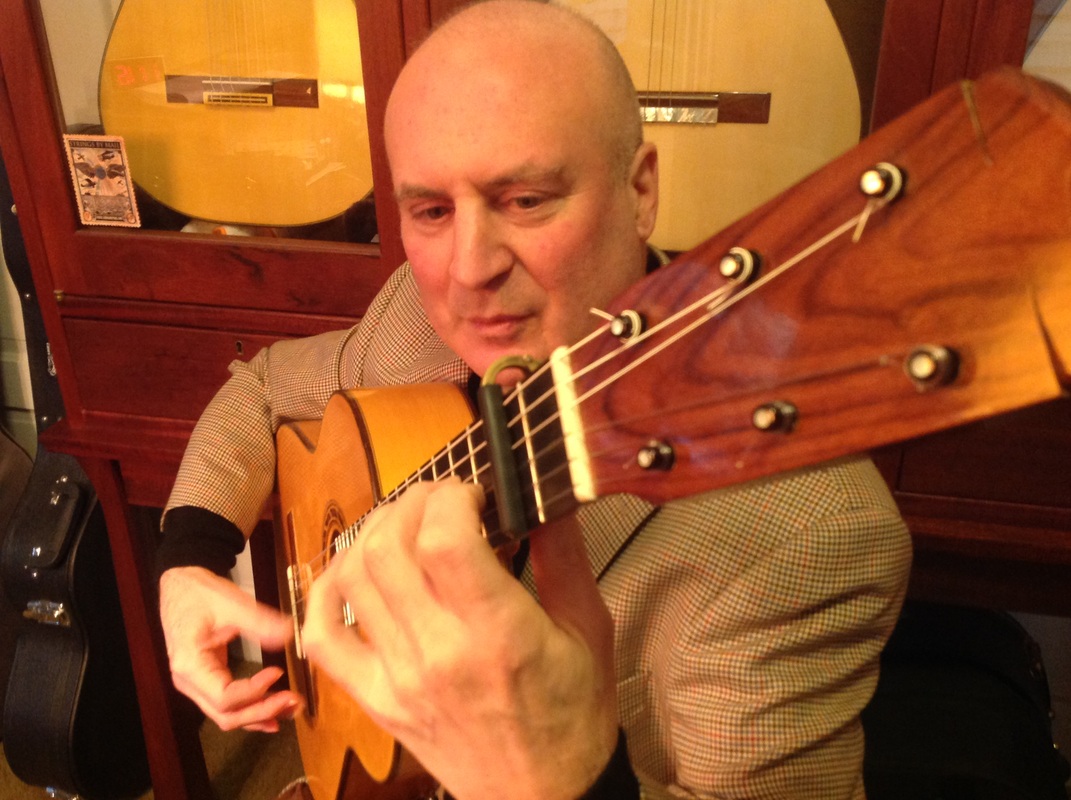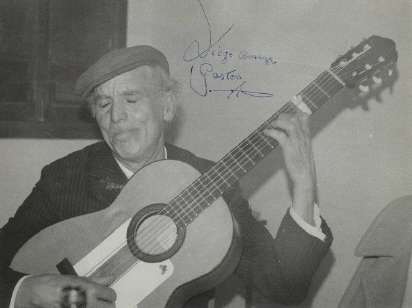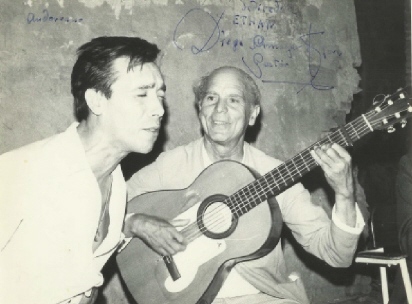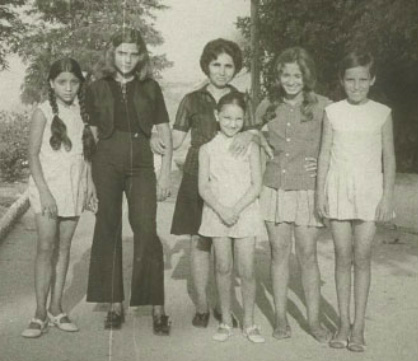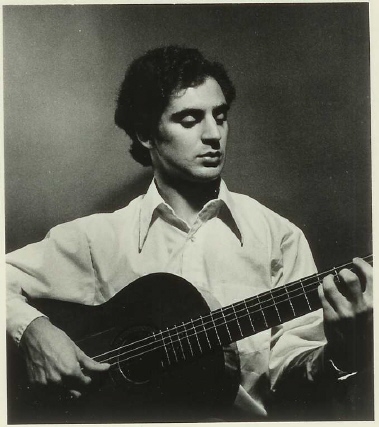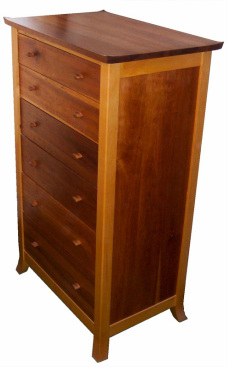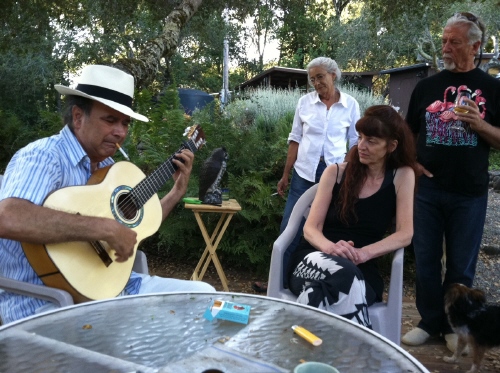Ethan Deutsch, Luthier, is sometimes also known as Mario Amaya, Flamenco Guitarist.
Biography
I left school after completing the seventh grade. In 1970, when I was fifteen years old, I had already been playing the Flamenco guitar for over a year. Having exhausted the knowledge of my teachers in the Boston area, I convinced my parents to send me to Spain for a year to learn more Flamenco. In Morón de la Frontera, Sevilla, I was warmly accepted by legendary Gypsy guitarist Diego del Gastor, shown below playing solo and accompanying singer Andorrano, circa 1970.
Diego helped me obtain the apartment across the hall from the one he shared with the widow of one of his nephews and her three young daughters, shown below in August 1971 wearing shoes I bought for them as good-bye presents, with two other Gypsy girls on the right.
The eldest, Fernanda, was my age, but I was closest to Mari Carmen, the spunkiest one, on the left. Paqui, in front of mother María, was the sweetest. Other Flamenco artists of their clan could be heard in other apartments across the courtyard, and the local tavern—a center of Flamenco activity—was just downstairs, on the corner of the block in this cluster of connected buildings.
Diego was a phenomenal artist and he groomed several of his nephews in his unique style of guitar playing, including Paco and Juan del Gastor, who can be heard on CD. It was mainly through listening and watching that I absorbed Flamenco, though I had a few formal lessons, too.
After returning home from Spain in 1971, with a Manuel Contreras Flamenco guitar, I came across Irving Sloane’s book Classic Guitar Construction, and I wanted to build guitars. Because I had a good guitar for reference, I could tell, after trying Sloane’s procedures, that some things were lacking in them. I realized that I needed further instruction to build the kind of guitars I wanted to build.
There was a luthier not far from my parents’ home in the Boston area—I have forgotten his name; he built more violins than guitars. When I (a sixteen-year-old seventh-grade dropout) approached him about an apprenticeship, his response was that I would need to start out as a floor sweeper in a European shop and work my way up there before coming to his shop.
At that time I was unable to find more information about guitar making other than a nutty-sounding brochure from Overholzer, who sold a side-bending device, and a strange article in Guitar Review, No. 28, by H. E. Huttig II, which says that few craftsmen other than Spaniards or their descendants are capable of shaping a guitar neck properly.
Since I wasn’t getting much encouragement or direction for becoming a professional Flamenco guitarist or a luthier, I decided that I would become a physician. A friend tutored me in algebra for two weeks so I could score high enough on the Scholastic Aptitude Tests. Then I applied to Antioch College, using photographs of my guitar-building processes in my application. I was accepted, earned a degree in chemistry, then changed course and earned a Ph.D. in chemistry at Princeton, after which I worked as a research chemist for five years.
Throughout college and graduate school I led a double life as a professional Flamenco guitarist on the side, stage name "Mario Amaya". This is a picture of me at age 21:
While I was doing research in graduate school I started to build wooden furniture—as a stress-relieving activity and to have nicer furniture than I could afford to buy. I learned to do woodworking by reading books and magazines and by practicing. The last company I worked for as a chemist built a new laboratory for me to head, with millions of dollars worth of equipment in it. My supervisor agreed to let me build the cabinets for it on weekends. Because we constituted the R&D department of the largest printing ink manufacturer in the world, a lot of people saw those cabinets, and several suggested that I go into business as a cabinetmaker.
In Chicago, in 1989, I opened a small one-man shop producing handcrafted furniture and cabinets, such as this dresser:
In Chicago, in 1989, I opened a small one-man shop producing handcrafted furniture and cabinets, such as this dresser:
I also played Flamenco three or four nights a week at Geja’s Café. In 1991 I moved my business to Seattle, Washington.
In 1997 I came full circle and started building guitars again. I discovered that a lot more information about guitar making had become available. Since then I have done a lot of building and received a lot of feedback from professional guitarists. I am confident that the guitars I am producing now have the power, range of tone colors, playability, and visual aesthetics that many players seek.
In 1997 I came full circle and started building guitars again. I discovered that a lot more information about guitar making had become available. Since then I have done a lot of building and received a lot of feedback from professional guitarists. I am confident that the guitars I am producing now have the power, range of tone colors, playability, and visual aesthetics that many players seek.
Epilogue
Here's a photo of Juan del Gastor playing an Ethan Deutsch guitar in 2012 in California. At the right is Daniel Staffler, another friend I knew in Morón.
